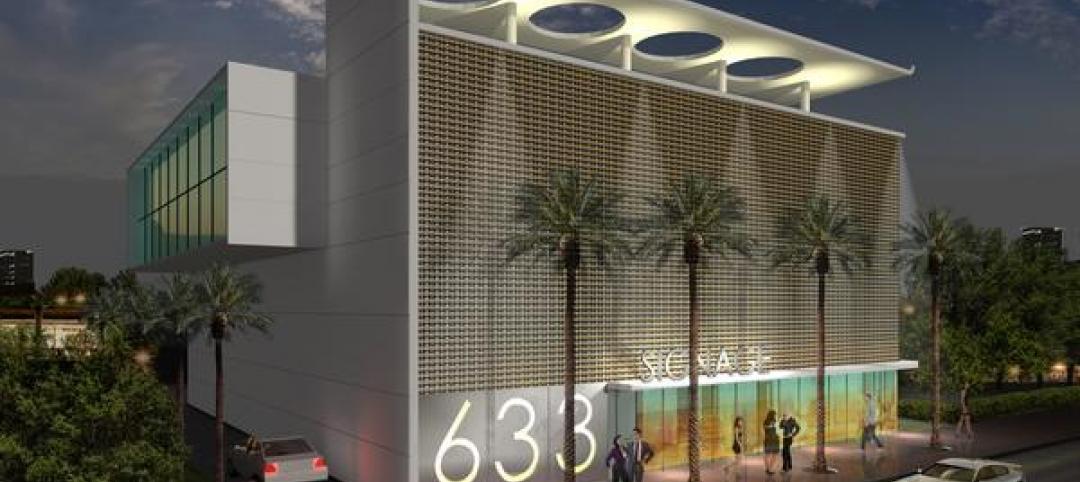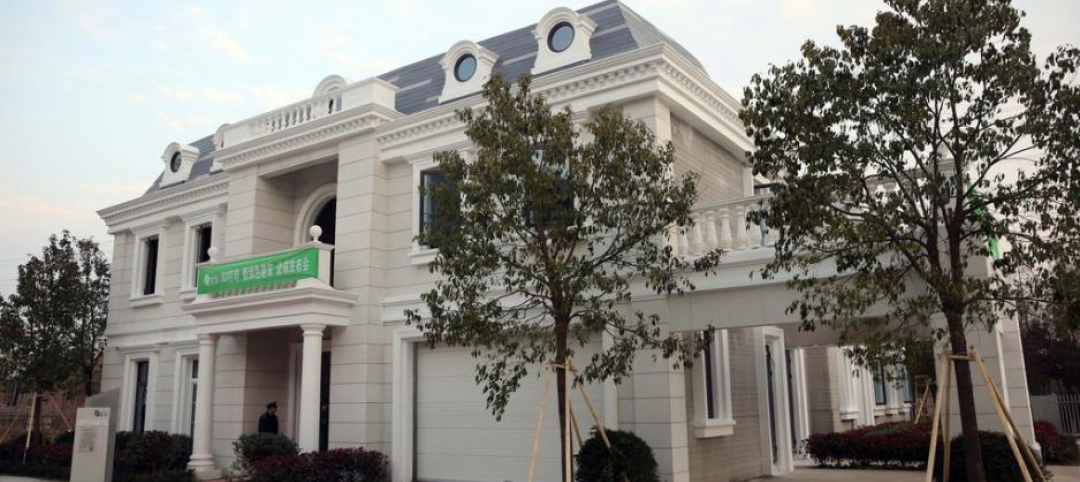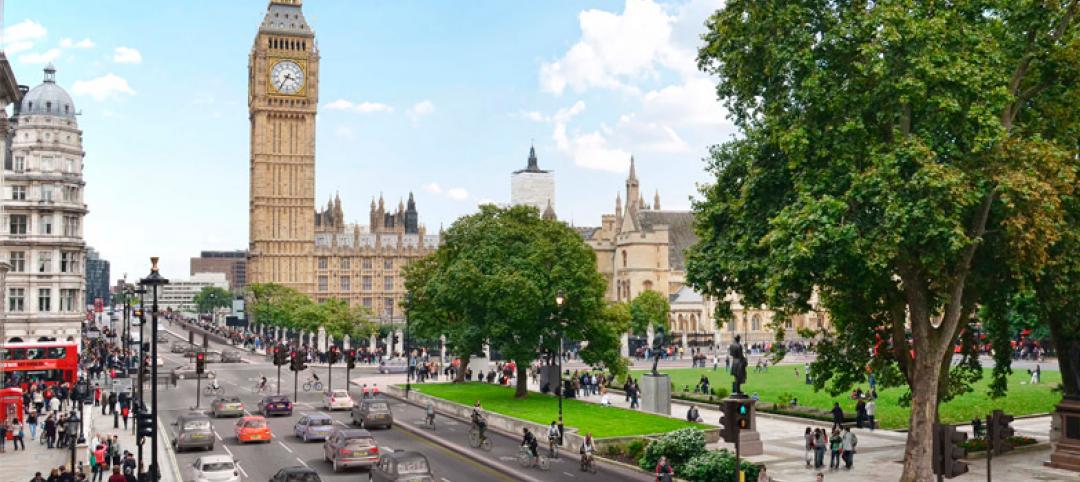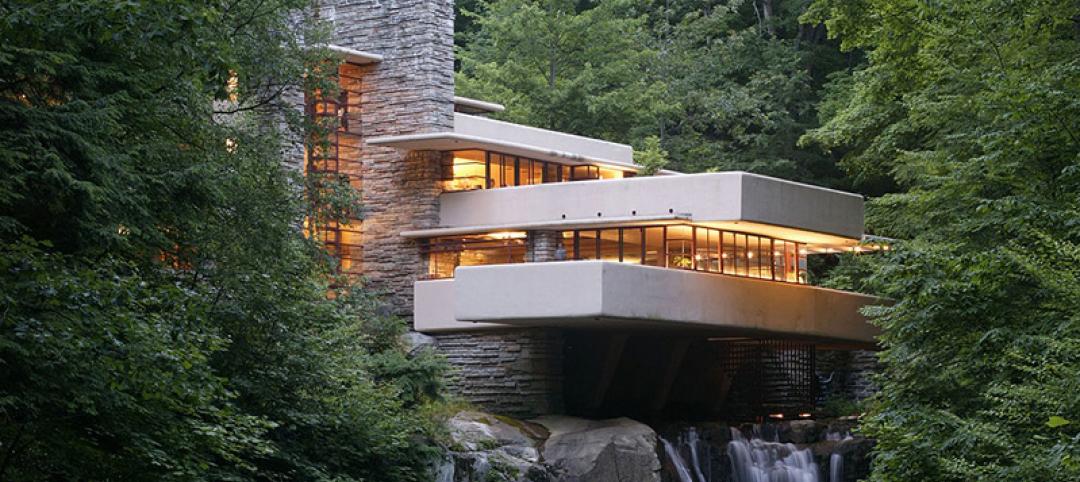On zero-energy cities: The idea of a zero-energy city is a subject I’ve been interested in most of my career, working in indigenous areas like Guatemala and the Middle East, looking for clues about the design of buildings in their cultural and historical fabric. For the last four years, we’ve been looking at how to relate buildings to the natural forces that are available to us—geothermal, wind, solar, building orientation, and so on.
Sears Tower as guidepost: In 2005, while Gordon Gill and I were still at SOM, we started to look at the need to not only reduce buildings’ reliance on energy, but also to absorb the energy and use the latent environment to its greatest advantage. The Sears Tower [now Willis Tower] has 10,000 panes of single-glaze glass, and each creates as much carbon as one SUV. So we looked into completely replacing the exterior wall, redoing the insulation panels, updating the mechanical systems, reducing the amount of artificial light in the inner space, using dimmer systems, greening the nine roofs, using solar provide hot water, and so on. The potential savings would be 68 million kWh a year, which translates to five million fewer miles of driving, or electricity for 2,500 homes. We concluded that we could save 80% of the base energy of the building and 50% of the tenant energy use for the building.
Decarbonizing Chicago: The Sears Tower got us thinking about the 2030 Challenge, the BOMA 7-Point Challenge, and the Chicago Climate Action Plan: What would happen if we analyzed Chicago’s Loop to meet those goals? Over the last year, our firm has conducted an extensive study, a Chicago Central Area Decarbonization Plan, to see what it would take to get a carbon-free environment by 2030. We looked at a 460-acre section of the Loop that represents 9% of the city’s emissions, 3.9 million tons of CO2e a year, to see how to get an 80% reduction by 2020 and eliminate 3.2 million tons of CO2e a year.
By taking every building in the study area, all 550, and applying what we did in the Sears Tower, you get about one-third of the way toward the 2030 Challenge. Then, if you change the “urban matrix” of the buildings in the Loop from essentially 100% office use to 50% office and 50% residential, that gets you two-thirds of the way there. And through means like smart infrastructure, increased pedestrian traffic, district cooling, reducing energy in water and waste, and community education—when you do all that, you still have about 20% of the way to go, and that 20% has to come from renewable power sources to achieve a total reduction of carbon.
New technology, new philosophy: The old technology, old philosophy is having a central power plant and transmitting the power from the central plant to each building in the city. The problem is that you’re only 40-50% efficient at the source, and you’re losing 30% more in transmission, so you’re throwing away 70-80% of the power. Using new technology with wind and solar farms still relies on transmitting energy to the city. The new technology, new philosophy is to make as much power on the site as possible. Then you can shave the peak period for all users and reduce the total number of power plants. And you don’t need the grid: every building becomes a power source.
QUESTIONS FROM THE IIT AUDIENCE
Does your plan use projections of future improvements in technology?
ADS: The Chicago decarbonization plan uses existing technology; we don’t rely on technology that doesn’t exist. As people hear about what we’re doing, new technology will become part of our daily lives. We don’t know if some of those things will work, so you can’t rely on unknown technology in the future.
What about the embodied energy of materials?
ADS: The best way you can save energy is to take something old and renew it. You have to tackle it building by building, district by district. The study showed that for $65 a square foot you could bring these buildings up to state of the art, vs. $250 a square foot to replace them.
How will you store energy for when it’s actually needed?
ADS: You have to have storage facilities to store that power, whether that’s a battery or limestone caves. This is a key area of investigation, and it’s going to take a clever solution to do this on an economical basis.
How likely is it that your plan could be implemented?
ADS: That’s a big question mark. In New York City, building owners have to do some of the things we’re talking about. This is a seed. You throw it out there.
Would the residential units be too expensive for low-income groups?
ADS: In the Loop, retrofitting the pre-1950s buildings could give you opportunity to do that, where units would be cost accessible. In the ’80s, we took a lot of abandoned manufacturing buildings and converted them into residential lofts that were quite affordable.
How do you counteract the public’s reaction to high density?
ADS: People don’t want their views blocked, and that’s where a master plan comes in, and zoning densities. Wacker’s “Manual of the Plan of Chicago” was used for 15 years after the Burnham Plan of 1909, to teach every public school student what the plan meant. We’re proposing a similar manual that creates strategies for a carbon-free environment.
Related Stories
Warehouses | Feb 5, 2015
Self storage facility designed to blend in with Miami Beach's party scene
The plans by architect Gutierrez & Lozano are of a sleek, boutique-looking, 22,500-sf facility at the gateway to the city.
Sponsored | Designers | Feb 5, 2015
3D printing has people in the building and construction industry talking
How can 3D printing affect the building design and construction industry?
Cultural Facilities | Feb 5, 2015
5 developments selected as 'best in urban placemaking'
Falls Park on the Reedy in Greenville, S.C., and the Grand Rapids (Mich.) Downtown Market are among the finalists for the 2015 Rudy Bruner Award for Urban Excellence.
Architects | Feb 5, 2015
Toy around with Ittyblox's ultra-detailed building blocks
For Lego fanatics, time is no object when building a model. For those of us with a little less time, Ittyblox is a good solution.
Transit Facilities | Feb 4, 2015
London mayor approves plan for a bicycle highway
The plan will guarantee bike riders a designated stretch of street to ride from east to west through the city.
Sports and Recreational Facilities | Feb 4, 2015
Arup unveils plans for the new A.C. Milan stadium
The venue will include a modern stage for the home matches together with a hotel, sports college, restaurants, children’s playground, green areas, and spaces open to the city and dedicated to public use.
Higher Education | Feb 3, 2015
Integrated Learning Neighborhoods: A solution for linking student housing with the typical student experience
Just as urban housing fits into the city as a whole, student housing can be integrated into the campus network as a series of living/learning neighborhoods, write Gensler's Brian Watson and Mark McMinn.
Office Buildings | Feb 3, 2015
5 trends transforming workplace design
RTKL's workplace design expert Jodi Williams foresees healthier and more technologically enabled offices that allow productive worker interaction, wherever they happen to be.
Architects | Feb 3, 2015
Frank Lloyd Wright’s work nominated for UNESCO World Heritage Status
If selected, Wright’s work will be the first examples of U.S. modern architecture on the list.
Contractors | Feb 3, 2015
Nonresidential construction spending expands in December 2014
Seven of 16 nonresidential construction subsectors posted increases in spending in December on a monthly basis.
















